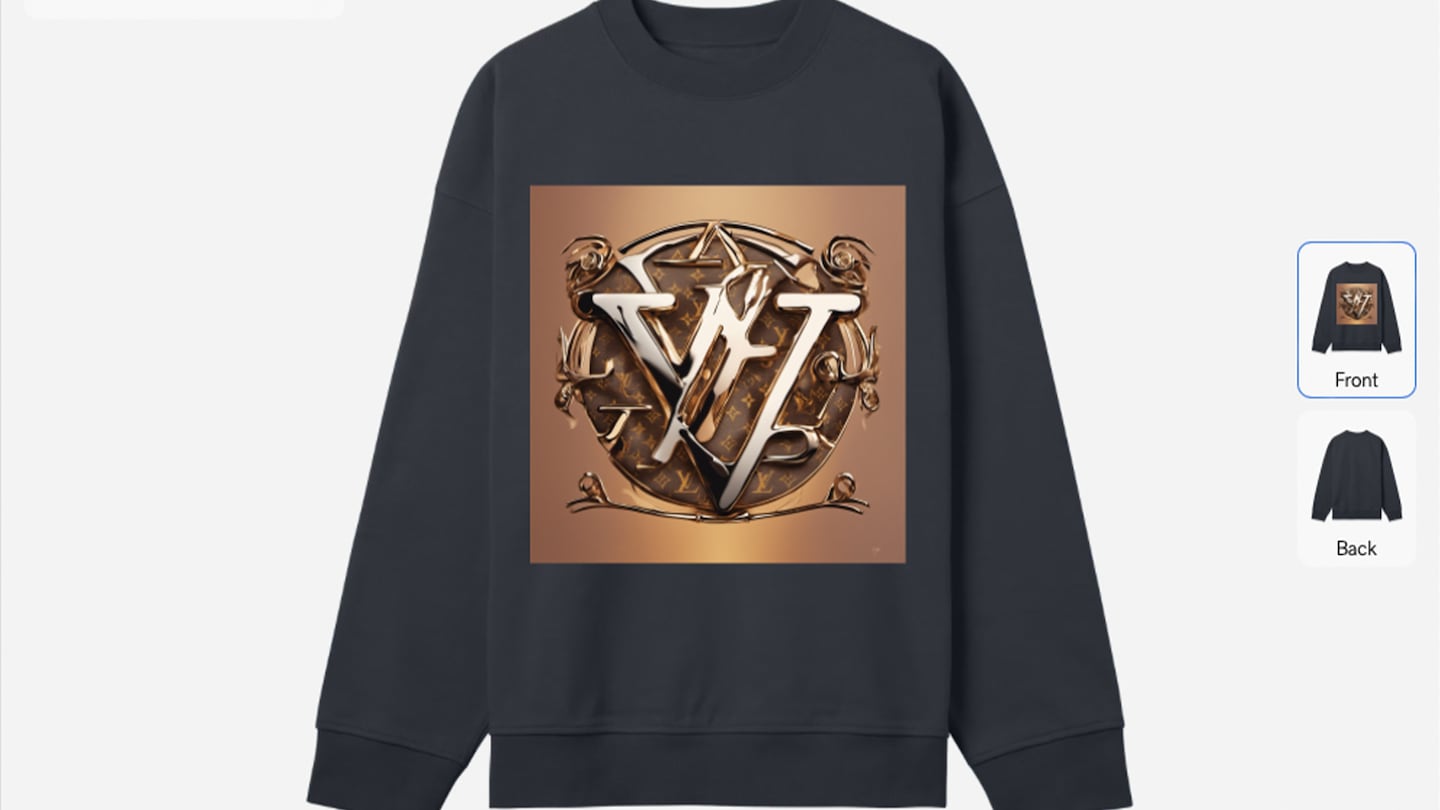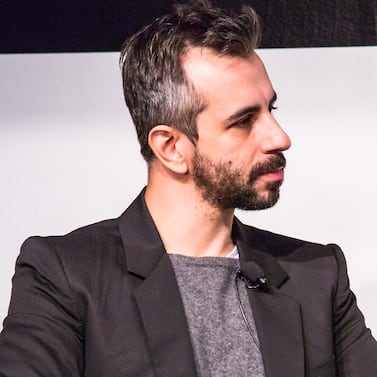
The Business of Fashion
Agenda-setting intelligence, analysis and advice for the global fashion community.

Agenda-setting intelligence, analysis and advice for the global fashion community.

Generative artificial intelligence makes it possible for you to conjure up images ranging from the photorealistic to the fantastical, regardless of your artistic ability. Now, the parent company of H&M wants to help you slap those images on a T-shirt.
H&M Group’s Creator Studio on Tuesday announced a new tool for generating designs powered by Stable Diffusion, an open-source generative-AI model. Like other AI image generators, it can produce imagery from written prompts, theoretically allowing anyone to conjure professional-looking designs without needing to know specialised software or have any drawing ability.
Users will then be able to tap H&M’s manufacturing and logistics infrastructure to get their digital creations printed onto articles of apparel and shipped around the world. The platform, introduced by H&M Group in 2021, had previously offered its on-demand services only to businesses and select creators, with customers it has worked with ranging from giant corporations like Disney and Warner Music Group to “the local pizzeria,” according to Dinesh Nayar, managing director of Creator Studio. The goal now is to allow anyone to create custom merchandise, regardless of who they are or their design ability.
“We can remove obstacles for anyone that maybe doesn’t have the skill sets of [Adobe] Illustrator, or any other design tool, to create new cool content,” Nayar said.
ADVERTISEMENT

Generative AI’s design capabilities can be controversial in fashion, where human skill and creativity are cornerstones. But for small businesses or creators like musical artists who aren’t trying to be clothing designers and just want to produce their own branded merchandise, those requirements can be a hindrance — though the graphic designers who work on these projects would likely say otherwise.
Regardless of those objections, Creator Studio is giving regular consumers the ability to create custom products. The question now is what they’ll do with their new powers.
A major concern surrounding generative AI lies in the ways people can misuse the technology. It could lead to more infringement of intellectual property, for instance, by making it easier to produce knockoffs. Though the popular image generators on the market won’t generally reproduce logos, they can still get into problematic territory. (Numerous artists and writers have filed lawsuits against AI developers claiming they’ve infringed their IP by training AI models on their copyrighted works without consent.)
Using a beta version of Creator Studio’s AI feature, BoF was able to create a design reminiscent of Louis Vuitton’s logo, though it wasn’t an exact match. The background the AI generated was a recognisable, if slightly warped, replica of Louis Vuitton’s monogram.
There are also risks around hate symbols. Creator Studio’s AI tool blocked a prompt to produce a swastika, but it did produce an iron cross, a symbol with a varied history that’s been used by hate groups at times. Without any specific instruction, the AI generated a cross coloured black and red, with spattering and drip details suggestive of blood.
Nayar said the company has considered the ways people could misuse its AI feature. It uses a combination of human moderators and technology to spot problems across different steps in the process, so even if its AI feature might generate a design, it doesn’t mean it would result in a finished product. Nayar was confident orders for the two designs I created would not have been fulfilled.
“Our content moderation would have caught the two artworks before they could be sent to production,” he said.
Merch has become an important source of additional revenue for a variety of businesses. To musical artists who may struggle to make enough from streaming, it can be a vital source of high-margin sales, leading Spotify to introduce a new hub for merch recently. In Nayar’s view, fashion is part of culture today, and merch has become fashion, whether the creators are music groups, sports teams, movie studios or influencers on TikTok.
ADVERTISEMENT
The company is currently able to deliver to more than 200 countries from its printing hubs in Europe and the US. It even has its own line of blank garments, called True Blanks. It’s looking to expand further by establishing a hub in the UK and another in Japan to better serve those areas, according to Nayar.
The new venture into AI is part of its mission to keep broadening the ability for anyone around the world to easily order custom merch, no bulk orders or artistic skill required.
From ChatGPT to Midjourney to Runway, the emerging technology is already showing why it could be one of the most consequential in decades for the fashion industry. Early adopters and experts unpack the opportunities and challenges of putting gen AI to use to design products, create campaigns and other content, and better connect with customers.
The buzzy brand, which used the technology to help design the collection it showed at New York Fashion Week, appears to be the first to use it to create physical runway looks, or at least the first to acknowledge it.
Just as photography didn’t spell the extinction of painting, generative AI won’t kill off human designers. It may even create more appreciation for the physical craft of fashion.

Marc Bain is Technology Correspondent at The Business of Fashion. He is based in New York and drives BoF’s coverage of technology and innovation, from start-ups to Big Tech.
The nature of livestream transactions makes it hard to identify and weed out counterfeits and fakes despite growth of new technologies aimed at detecting infringement.
The extraordinary expectations placed on the technology have set it up for the inevitable comedown. But that’s when the real work of seeing whether it can be truly transformative begins.
Successful social media acquisitions require keeping both talent and technology in place. Neither is likely to happen in a deal for the Chinese app, writes Dave Lee.
TikTok’s first time sponsoring the glitzy event comes just as the US effectively deemed the company a national security threat under its current ownership, raising complications for Condé Nast and the gala’s other organisers.